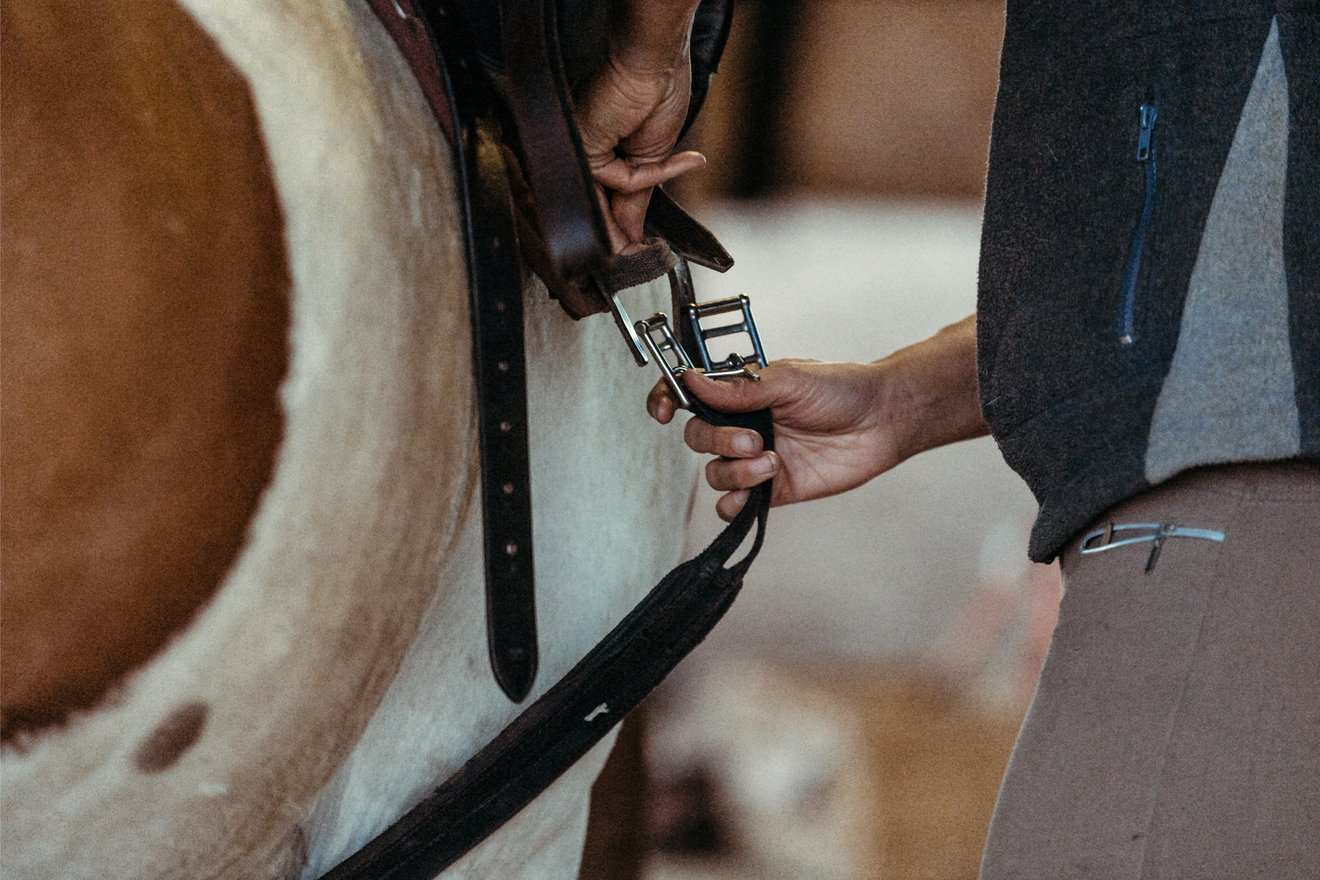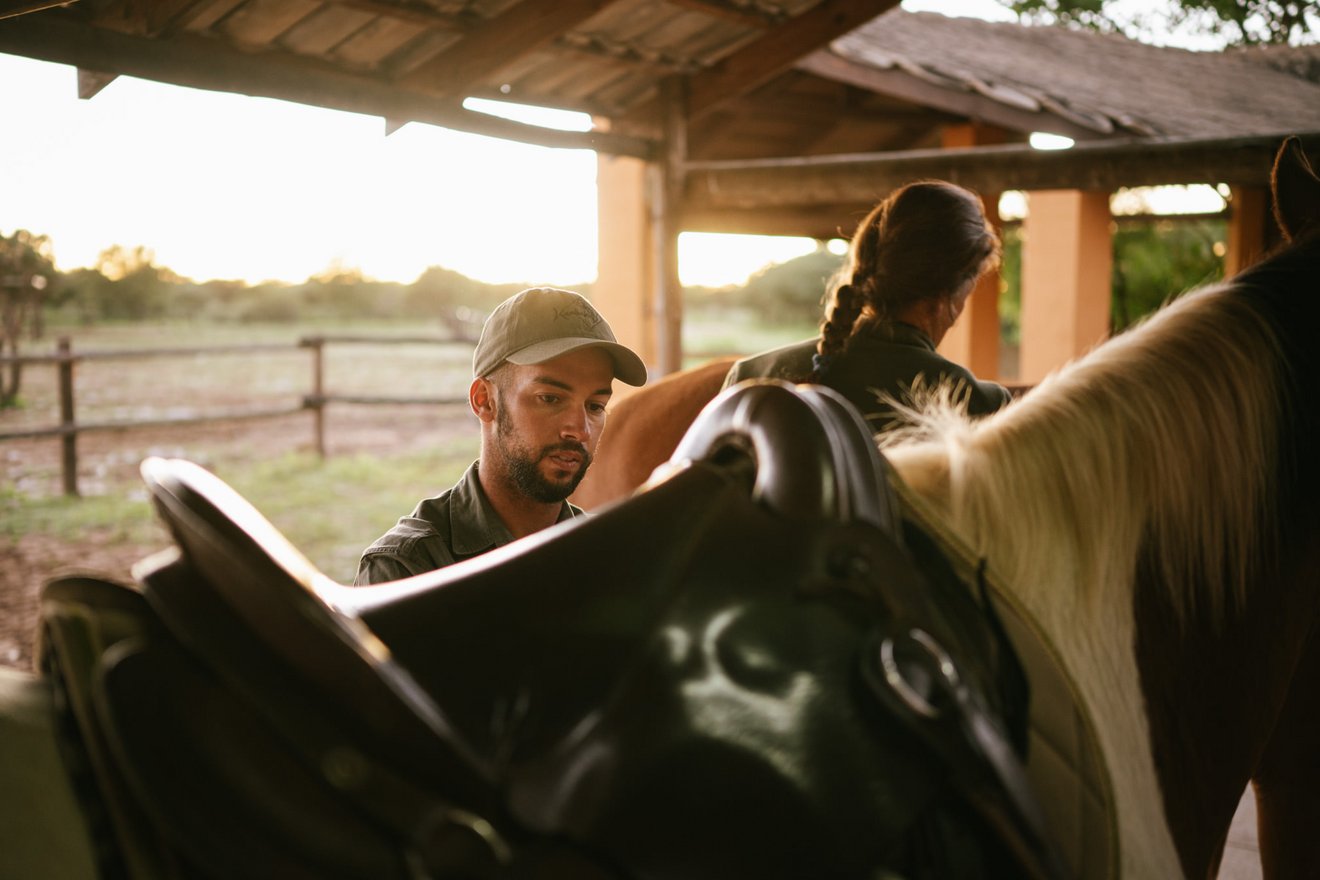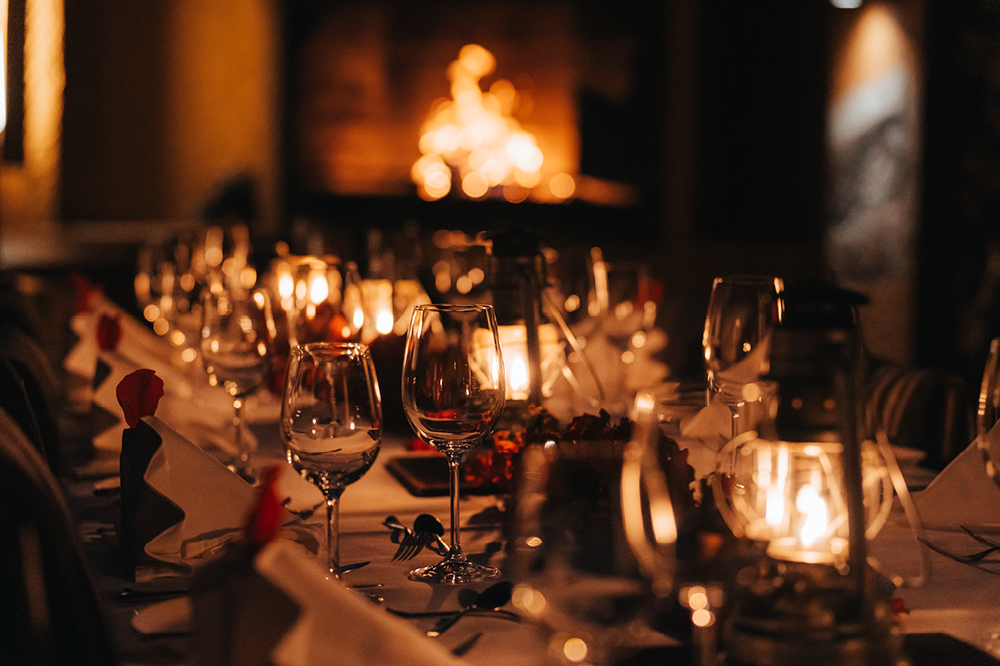A horseback safari is a truly unique experience. Far from the usual tourist routes, you ride through untouched landscapes, encounter wild animals, and enjoy intense moments in the saddle. Because you’ll be out in the wild – or in the thornbush savannah at KAMBAKU – a well-thought-out packing list for your riding safari can make a big difference to your safety, comfort, and overall peace of mind. It should go well beyond just your wash bag and pyjamas. In this article, we’ll show you exactly what to pack for a horseback safari.
Note / Disclaimer:
Our top tips to pack for a horseback riding safari focuses a horseback safari at KAMBAKU. However, it can also be a helpful guide for riders preparing for a horse safari in other parts of Africa. Please just keep in mind that Kambaku Safari Lodge in Namibia offers many services (e.g., complimentary riding helmet rental, saddle bags, laundry service etc.) that may not be available everywhere.
Helpful Tips
THE RIGHT COLOURS FOR A RIDING SAFARI
Being discreet, respectful, and quiet are key to unforgettable wildlife encounters in Africa. This means moving calmly, whispering only when close to animals, if at all and also dressing in appropriate colours. If you’re following game on horseback, avoid bright whites, flashy or neon shades. Instead, choose natural, earthy tones like muted beige, khaki, or brown.
Old clothes vs. top-grade gear
A handy tip from seasoned local guides: opt for older, well-worn clothing rather than your latest designer gear. It helps you avoid unpleasant chafing – and you won’t be upset if something gets torn or lost with your luggage.
Top packing tips include:
Well-worn boots...
...are a must if you want to avoid blisters. Riders may occasionally need to dismount and lead their horses through tricky terrain, or walk the last stretch to give their mount a gentle end to the day.
Older jodhpurs and tops...
...that you’re not too attached to. It’s not uncommon to get snagged on thornbushes that can tear small holes in your clothing.
Safety leash or backup phone
We understand you’ll want to capture unforgettable moments with your camera or phone. But the savannah’s ground is hard, and the undergrowth is dense. Make sure your device is well secured – for example, with a strap – to avoid dropping it or losing it in the bush. If you have an older phone, consider bringing it for photos instead.
Gear & Accessories
Extra stuff you don't want to miss on a horseback safari
At KAMBAKU, we provide riding helmets free of charge and offer a laundry service that returns your clothes freshly cleaned and ironed within 48 hours. That saves space in your luggage – useful if you’d prefer to bring a safety vest for the trail rides (please note special regulations apply to travelling with airbag vests as checked baggage). For children, we also have protective vests available at no extra cost. Our comfortable trail saddles also include small saddle bags – perfect for carrying a drink, which we’ll provide for your safari rides.
On Safari
CODE OF CONDUCT IN THE SAVANNAH
If you hope to encounter wildlife in the savannah, you’ll need to stay calm and inconspicuous. In large national parks, many animals are used to people and vehicles. But in remote or private reserves like the Kambaku Wildlife Reserve in Namibia, you’ll meet antelope, zebra and other wildlife still living naturally and cautiously in their native habitat. For these animals, vigilance is a survival skill and curiosity takes a back seat.
Wildlife & Riders
Unlike a game drive or bush walk, riding often allows you to get closer to animals. Moving on four legs, under the cover of your horse and the sound of its hooves, wildlife may only notice you late – and won’t perceive you as a threat the way they might a motor vehicle. That said, even on horseback, it’s the quiet observer who is rewarded with the most magical moments.
Your Guide & Your Safety
Whether or not you’re in an area with potentially dangerous wildlife, it’s essential to follow your guide’s instructions – for your safety, your horse’s, and the animals’. Your guide knows the terrain and its hidden risks, from a protective warthog mother to an aardvark hole that could trip a horse. They also know your horse better than you might: maybe it once had a scare with a snake at a certain termite mound and now instinctively avoids that spot, or it reacts nervously to the call of a hornbill.
A Guest in Nature
It goes without saying that we are guests in nature and should minimise our environmental footprint. This means leaving absolutely no litter behind, not even tissues or chewing gum, which can be lethal to birds and small mammals. As there are no bins in the bush, pack preferably jackets or trousers with pockets to stash any rubbish until you return.
It should also be obvious that smoking in the bush requires extreme caution, and dropping cigarette butts is an absolute no-go. Beyond being toxic to wildlife, they pose a serious fire risk with potentially devastating consequences in Namibia’s dry climate.


![[Translate to English:] Ausrüstung Reiturlaub Afrika](/fileadmin/_processed_/f/4/csm_Header-Pack-RidingSafari_94dff135fb.jpg)


